- NEW DVD Series – Stone Setting with Bezels
- Tube Set Charm by Kim St. Jean
- Prong Basket Pendant by Kim St. Jean
- NEW DVD Series – Stone Setting with Cold Connections
- New DVD Series – Stone Setting with Wire
- NEW DVD Series: Introduction to Stone Setting by Kim St. Jean
- Featured Tool: Bracelet Bending Plier
- NEW Dvd by Eva Sherman
- Fun, Fast Fold Forming DVD Series
- Double Band Ear Cuff from Alex Simkin
What is a Jig?
by Judy Ellis, Wire-Sculpture.com
Tool Tip of the Week for June 16, 2014
This week’s Featured Tool is the Wig Jig Olympus Transparent Jig: #G36-1
What exactly is a “Jig”?
The web site Dictionary.com defines a jig for machinery as:
“a plate, box or open frame for holding work and for guiding a machine tool to the work, used esp. for locating and spacing drilled holes; fixture.”
A history lesson…
The first use of wire in making jewelry is something that can be seen in Sumerian jewelry from the Dynasty of Ur about 2560 BC. The British Museum has examples of jewelry made with wire and beads obtained from the Royal Cemetery of Ur (Iraq). That jewelry includes spirals made of the primitive wire.
This early wire was hollow and was made by pounding sheets of metal flat, cutting the sheets into strips and then rolling the strips into hollow tubes that resemble modern wire but are hollow. Gold, because of its ability to be found in its elemental state in nature, and because it can be hammered into extremely thin sheets was probably the first metal used to make this primitive wire.
Examples of wire and sheet metal jewelry can also be found in Egyptian, Greek and Roman jewelry. Since these early times, patterns were known to be used in architecture and construction and were likely to be used in making jewelry. While we have no examples of jigs or patterns being used to make that jewelry, one can surmise that sometime after the Sumerians, but likely before the Romans that patterns made out of carved wood were use to shape jewelry components.

The most splendid find was a stone sarcophagus containing three coffins nested within each other. Inside the final coffin, made out of solid gold, was the mummified body of the boy-king Tutankhamen, preserved for 3,200 years. Most of these treasures are now housed in the Cairo Museum.
In 1914 the US Patent and Trademark Organization issued a patent for a metal bending jig with moveable pegs to be used in bending rebar in the construction industry. In the middle 1930’s some textbooks for making jewelry with wire showed how to make a fixed peg jig by simply hammering nails into a board. Prior to 1990, artists making jewelry were constrained to making their own jig or patterns to be used in making their jewelry. In 1995, a patent was issued to Gary Helwig for a wire bending jig that contained a fixed pattern to be used for making jewelry wire components. As that time the WigJig company was founded to make and sell those fixed peg jigs.
The Wig Jig Today…
There are two forms of accessories that are used with jewelry making jigs.
- The first accessory is rounded pegs in larger sizes.
- These pegs are shaped like mushrooms, with the stem of the mushroom fitting into a hole in the jig.
- The top of the mushroom forms a larger diameter surface for shaping wire around the circumference or a portion of the circumference of the peg.
- These larger diameter pegs generally come in sizes from 3/16″ to as large as 2″.
The Wig Jig Olympus Transparent Jig:
- Our wire jewelry jig has 40 pegs and 481 holes.
- The jewelry jig is designed to handle steel and softer wires up to 1/4 inch in diameter.
- Great for making any kind of jewelry or beading components.
- Being transparent, you can place this wire jig over any desired pattern for easy transferring of design to wire.
- Use our wig jig board to create findings, chain links, earrings and more.
I hope you have little better understanding of the Jig! The Jig is a great tool to help you create amazing designs.
If you want to get started with a few easy coil patterns, Click Here for a tutorial on how to make Square Spirals, as well as a lesson on making Easy Egyptian Coils.
If you are interested in learning more about Jewelry Making, CLICK HERE to sign up for our FREE JEWELRY MAKING PATTERNS.
Happy Wrapping!

Reference:
- WigJig company archives.
- US Patent 6,253,798
- “Interpreting the Past — Ancient Jewelry” by Jack Ogden, ISBN-0-520-08030-0, dated 1992
- More about King Tut
Click to Receive Daily Tips by Email





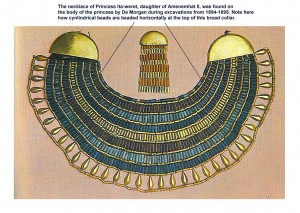

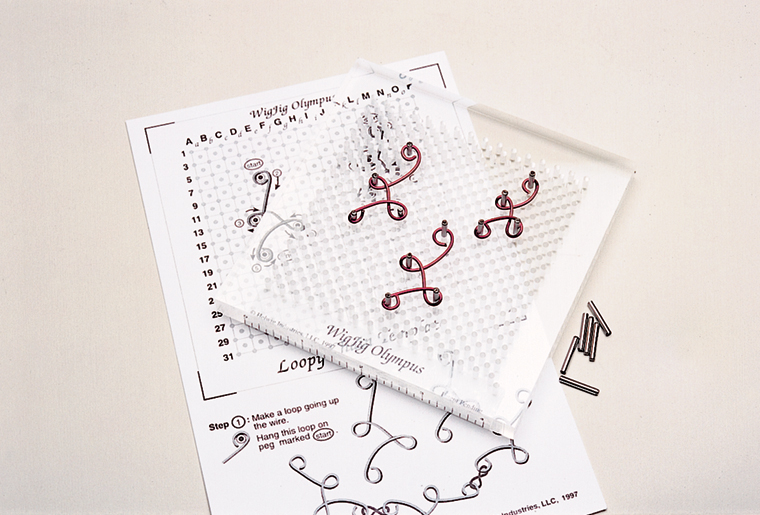
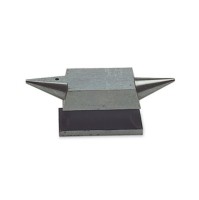
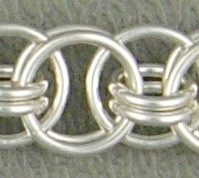
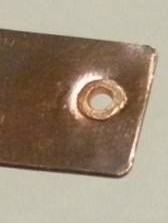















Jim Harkins
November 5, 2014 at 7:47 am
I agree totally with the value of wire-working jigs. The only problem I have found with them is that the pegs often are too loose in the holes, which takes away from the integrity of the design.
Connie
September 17, 2015 at 8:06 am
There is a jig on the market now that the pegs screw in. I use my jig mainly to make ear wires so I just use a super glue to hold the pegs in place.
Penelope
January 2, 2016 at 1:02 pm
I found a need for a jig about a year ago. In looking online for jigs I didn’t find what I wanted, so I purchased a small jig from one of the craft stores. The wire slipped and kinked and drove me crazy. Then, I had occasion to look at one of my husband’s ammo holders. Lots of little pegs, they could be glued together to make larger jigs, and no pegs slipping. An ammo jig holds bullets in a fixed position so the pegs are hard plastic and hold up to wire being pushed down on them. I looked at some of the patterns online, and started making bracelets, necklaces and earrings. I also enjoyed “repurposing” something that most folks just throw away!